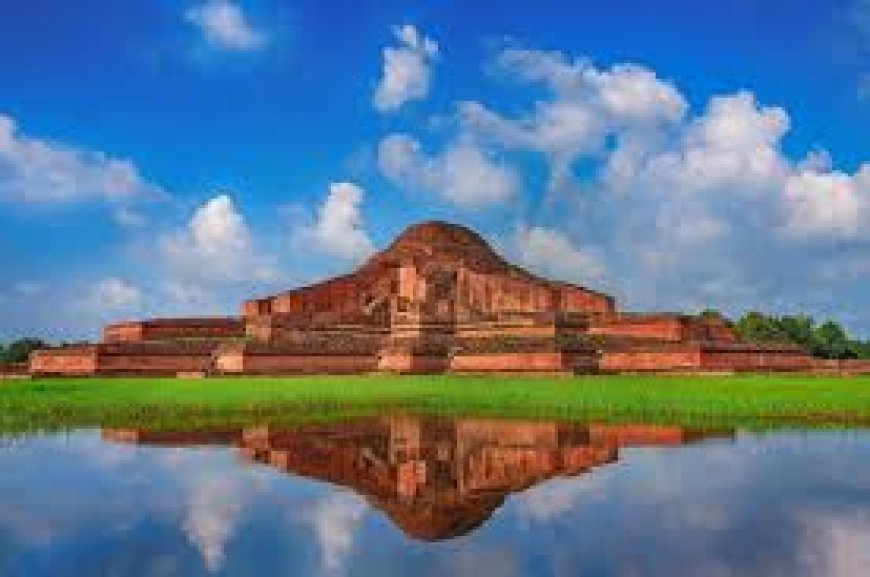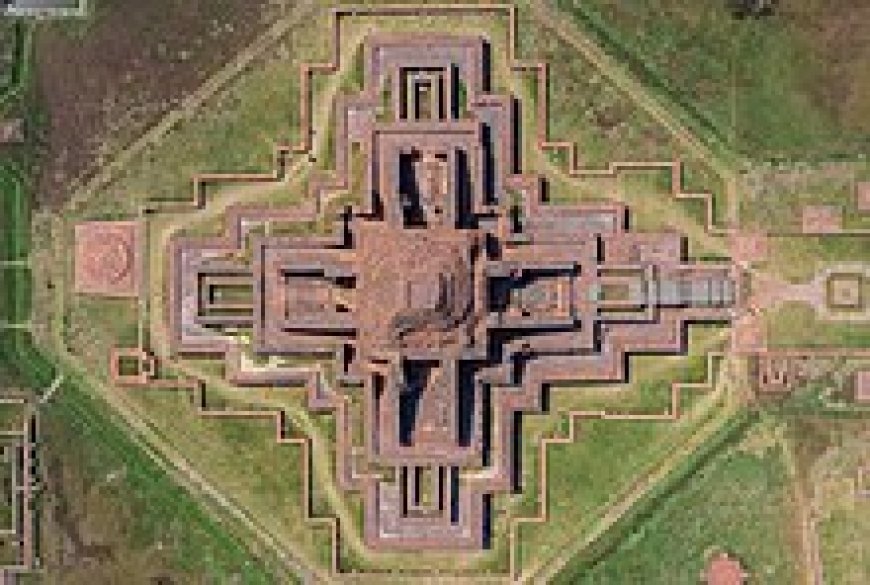Somapura Mahavihara: The Heart of Buddhist Monasticism
Bangladesh is a country of rich history, vibrant culture, and breathtaking natural beauty. Among its many treasures lies the magnificent Paharpur Bihar, also known as Somapura Mahavihara, one of the most important archaeological and cultural sites in South Asia. Recognized as a UNESCO World Heritage Site, Paharpur stands as a testament to the rich Buddhist heritage of the region and attracts history enthusiasts, pilgrims, and travelers from around the globe. Whether you’re planning a Bangladesh UNESCO World Heritage Tour or simply seeking an immersive journey into the past, Paharpur is a must-visit destination.
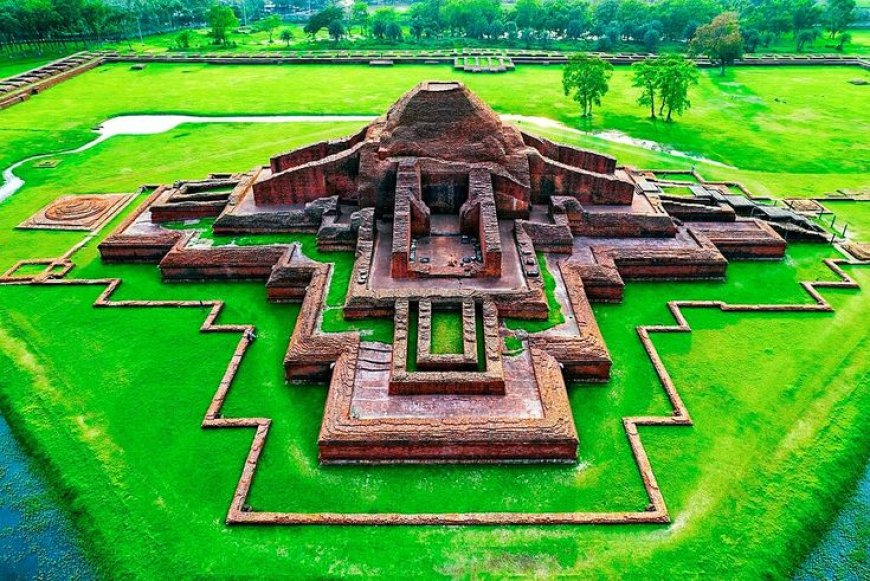
The Birth of Somapura Mahavihara
The Sompur Bihar, or Somapura Mahavihara, was commissioned by the Pāla dynasty’s second ruler, Dharmapala, in the late 8th or early 9th century CE. The Pāla dynasty was renowned for its patronage of Buddhist art and architecture, and this vihara epitomized their devotion. Situated in what is now Paharpur in Bangladesh, this monastery was not just a religious center but a hub of education, attracting scholars from across South Asia and beyond.
The term “Mahavihara” translates to “great monastery,” and Somapura truly lived up to its name. Covering an area of approximately 27 acres, the monastery’s grandeur reflects the zenith of Buddhist architectural ingenuity. The central stupa, surrounded by cells for monks, libraries, and courtyards, is an awe-inspiring sight that showcases the blend of artistic and spiritual aspirations of its time.
Architectural Marvel of Paharpur Bihar
The architectural design of Paharpur Bihar is a remarkable fusion of local and international styles. Its layout resembles a mandala—a symbolic representation of the universe in Buddhist cosmology. The central shrine, with its cruciform base and pyramidal superstructure, is surrounded by 177 monk cells arranged in a quadrangular pattern. This distinctive layout makes the ruins of the Buddhist Vihara at Paharpur a unique archaeological site.
Highlights of the Site
- The Central Stupa: The towering central structure is the focal point of the monastery. Its unique cruciform shape and tiered design make it a masterpiece of ancient architecture.
- Terracotta Artworks: The decorative terracotta panels offer a glimpse into the artistry and storytelling traditions of the era.
- Monastic Cells: The cells surrounding the stupa were living quarters for monks, featuring simple yet functional designs.
- Meditation Halls and Shrines: These spaces were used for rituals and spiritual practices, underscoring the religious significance of the site.
The terracotta plaques adorning the walls of the monastery are a striking feature, depicting scenes from everyday life, mythical stories, and religious motifs. These exquisite artworks shed light on the cultural and spiritual traditions of ancient Bengal. The architectural style also exhibits influences from Gupta, Southeast Asian, and traditional Bengali designs, making Paharpur a melting pot of artistic traditions.
Educational and Cultural Hub of Paharpur Bu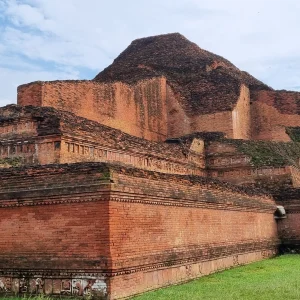 ddhist Vihara
ddhist Vihara
During its prime, Somapuras Mahavihara was a renowned center of learning. Scholars and students from far and wide, including countries like China, Tibet, and Southeast Asia, flocked to Paharpur to study subjects ranging from Buddhist philosophy to astronomy and medicine. The vihara’s library was one of the largest in the region, housing an extensive collection of manuscripts and scriptures.
Paharpur’s significance extended beyond religious boundaries. It was a meeting point of cultures, where intellectuals exchanged ideas and enriched the local traditions. This cultural synthesis is evident in the artistic and architectural elements of the vihara, which reflect a harmonious blend of diverse influences.
The Fall and Remarkable Rediscovery
As time passed, the prominence of Buddhism in Bengal waned, and with it, the glory of Somapura Mahavihar began to fade. Political upheavals, invasions, and shifts in religious patronage led to its gradual abandonment. By the 12th century, the once-thriving monastery had fallen into disuse and was eventually forgotten, hidden beneath layers of earth for centuries.
The story of Paharpur took a remarkable turn in the late 19th century when it was rediscovered during archaeological explorations. The Archaeological Survey of India spearheaded the efforts to excavate the site, unearthing the awe-inspiring ruins of the ancient monastery. These systematic excavations not only revealed the architectural brilliance of the site but also rekindled interest in the rich history and cultural heritage of Paharpur in Bangladesh.
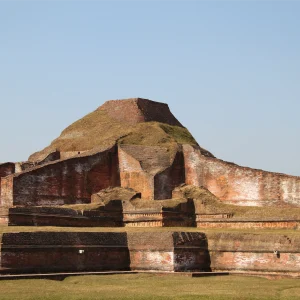 Somapura Mahavihara as UNESCO World Heritage Site
Somapura Mahavihara as UNESCO World Heritage Site
In 1985, the ruins of the Buddhist Vihara at Paharpur were designated a UNESCO World Heritage Site. This recognition underscores the historical, cultural, and architectural significance of Somapura Mahavihar. Today, Paharpur attracts tourists, historians, and Buddhist pilgrims from around the world, offering a glimpse into the glorious past of this region.
Paharpur’s legacy is deeply embedded in the cultural fabric of Bangladesh. Known locally as “পাহাড়পুর বৌদ্ধ বিহার” (Paharpur Bauddho Bihar), it serves as a symbol of the country’s rich heritage and its historical connection to Buddhism. Efforts to preserve and promote the site continue, ensuring that future generations can appreciate its historical importance.
The site’s museum, located near the ruins, displays artifacts uncovered during excavations, including pottery, coins, inscriptions, and sculptures. These relics provide a deeper understanding of the daily life, religious practices, and artistic achievements of the people who lived in and around Paharpur.
Plan Your Visit to Somapura Mahavihara
If you’re considering a Bangladesh UNESCO World Heri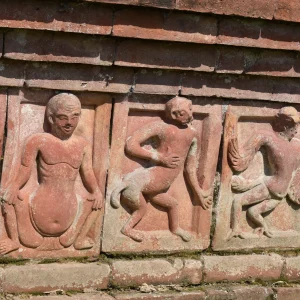 tage Tour, Paharpur should be at the top of your itinerary. Here are some tips to help you make the most of your visits:
tage Tour, Paharpur should be at the top of your itinerary. Here are some tips to help you make the most of your visits:
- Getting There: Paharpur is approximately 250 kilometers from Dhaka, the capital of Bangladesh. You can reach the site by road, with several tour operators and agencies offering organized trips.
- Best Time to Visit: The cooler months from October to March are ideal for exploring Paharpur, as the weather is pleasant and conducive to outdoor activities.
- Travel with Experts: Hiring a reliable tour agency can enhance your experience by providing insights into the site’s history and significance.
Nearby Attractions
While visiting Paharpur, consider exploring other nearby attractions to enrich your journey:
- Mahasthangarh: An ancient city site with a rich history dating back to the Mauryan Empire.
- Kusumba Mosque: A fine example of terracotta mosque architecture from the Bengal Sultanate.
- Varendra Research Museum: Located in Rajshahi, this museum houses an extensive collection of artifacts from the region.
Conclusion
Somapura Mahavihara, or Sompur Bihar, is more than just a historical site; it is a bridge between the past and the present, a place where ancient wisdom meets modern curiosity. Whether you are an avid historian, a spiritual seeker, or a curious traveler, Paharpur offers a unique and unforgettable experience.
Embark on a journey to discover the wonders of Paharpur in Bangladesh, and let the echoes of its glorious past inspire your present. With the expertise of a trusted Bangladesh tour agency, your exploration of this UNESCO World Heritage Site will be as enriching as the history it represents. Don’t miss the opportunity to witness the grandeur of Somapura Mahavihar Bangladesh and immerse yourself in the timeless beauty of this cultural gem.
What's Your Reaction?























